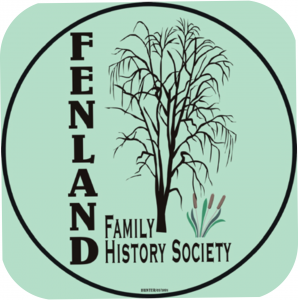The audience was entertained and informed by Jonathan Farmer who gave valuable insights into the ways in which it is possible to research military history. Jonathan prefaced his talk by outlining his credentials as a military historian; he served in the TA for 38 years and did a 4 ½ year stint at The National Archives as a researcher in Military Records, he then did a part –time Master’s degree on First World War Records at Birmingham University.
Jonathan told us that accessing records for the Second World War onwards requires contact with the MOD who will need proof of relationship so effectively we are only able to research the First World War. One of the major problems is that two thirds of the Great War records were destroyed (accidentally) by fire in the second world war.
Most people starting out on research may only have partial information to go on: possibly a name, a medal, a story or a photograph. Some people are lucky enough to be able to locate information using sites like Ancestry and Find My Past but bearing in mind the problem with missing records and the fact that only those serving overseas were entitled to medal there problems to be overcome.
Photographs of servicemen vary in quality but Jonathan gave some very useful tips about looking for clues. He suggested that we learn to identify three of the cap badges (Royal Artillery, Royal Engineers and Army Service Corps) as those three regiments accounted for a large percentage of the army. If at all possible try to identify the battalion the serviceman served in as daily war diaries were kept by the adjutant of each battalion and those records are available The National Archives.
It is sometimes possible to identify more information that is specific to particular regiments but there are some general pieces of information that can be “read” in a good photograph. Chevrons on a lower sleeve identify the number of years that someone served. The first available was a red chevron for the British Expeditionary Force in 1914/15 and the subsequent years were blue so a photograph showing 3 chevrons would have to be taken in 1916 or later. Wound stripes were placed on the left sleeve and were made of 2 inch long gold Russian braid; the rules about who was entitled to these were continually tightened to prevent misuse. Good conduct stripes were awarded to privates and lance corporals and can be identified.
If you know your relative was awarded medals you may be able to access Medal Index Cards (available on Find My Past and Ancestry) – again two thirds of these were destroyed in the 1940 Blitz. The MIC will give name, Regiment, Service Number and information about specific medals as well as (up to 1916) the embarkation date which was the day that the soldier became entitled to a medal. Jonathan suggested the web site “The long, long trail” as good source of information about regiments.
The electoral register is a further source of information for the immediate post-war years as demobilisation took place into 1920 and absent voters are noted together with their regiment and service number.
Jonathan illustrated his talk with photographs and images and showed the audience how to identify different points and then took questions at the end of his talk. Once again we were treated to have a well- researched, informative and entertaining talk.
[Margaret Lake ]
January meeting: Kevin Rodgers – Wisbech workhouse
As most members know, Kevin is a prolific writer on Wisbech local history. He owned up that after publishing a book he tries to forget
